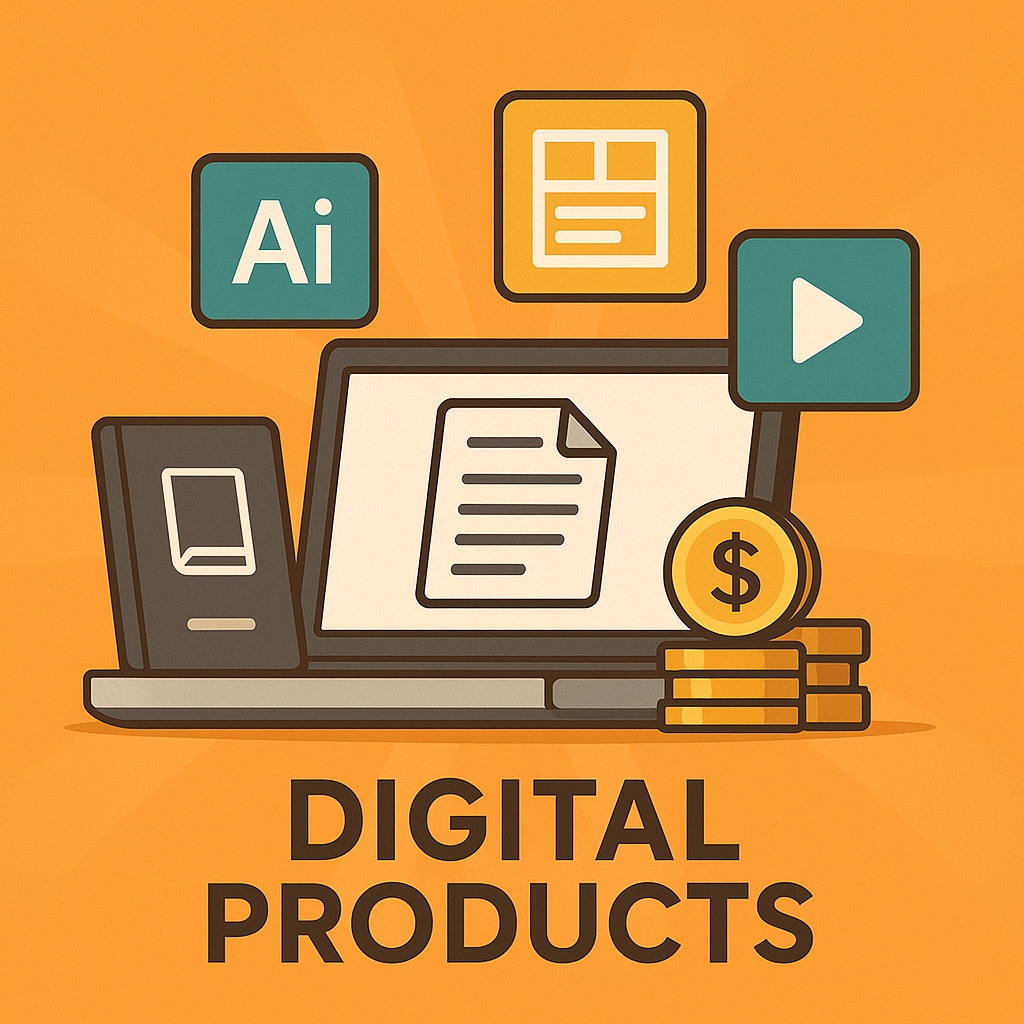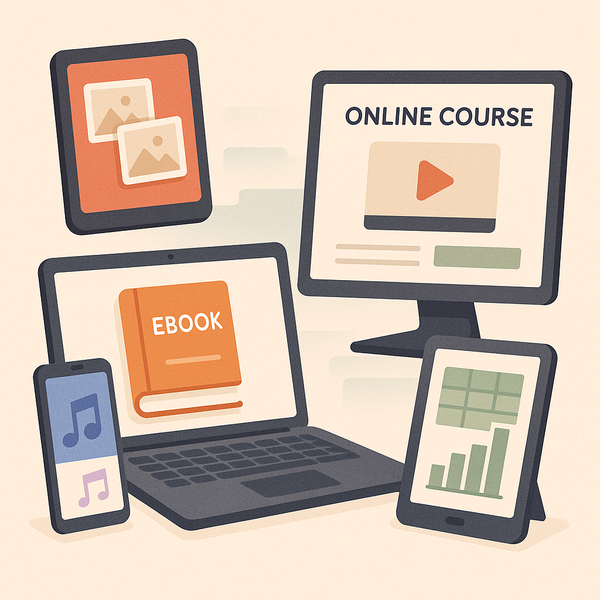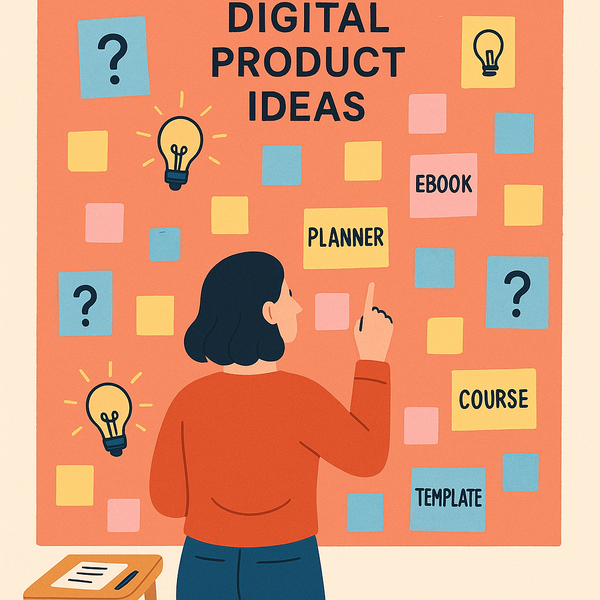How to Make Money Selling Digital Products Online

Selling digital products remains one of the smartest online business models in 2025. With low overhead, high profit margins, and the ability to automate much of the process, digital products offer a path to scalable income — and a lot of freedom.
Here's a complete step-by-step guide to getting started.
Step 1: Choose Your Digital Product Type
First, decide what kind of digital product you want to create. Some of the most popular and profitable types today include:
| Product Type | Examples |
|---|---|
| eBooks | Guides, niche handbooks, workbooks |
| Templates | Notion setups, Canva templates, resumes |
| Printables | Planners, journals, budgeting sheets |
| Online Courses | Micro-courses (1–2 hour focused lessons) |
| AI Tools and Prompt Packs | Midjourney prompts, ChatGPT prompt libraries |
| Stock Content | Stock photos, videos, AI-generated art |
| Audio Products | Meditation tracks, sound effects, lofi beats |
| Licensable Tools | Spreadsheet calculators, notion databases |
Digital products work because they are fast to create, cost little to reproduce, and have an endless shelf life once made.
Step 2: Pick a Profitable Niche
Choosing a strong niche is crucial. You want a niche where people are actively trying to solve a problem or improve their lives.
Examples of smart niches in 2025 include:
- AI and productivity (such as cheat sheets and prompt libraries)
- Financial planning for remote workers and freelancers
- Mental health and wellness (journaling templates, mindfulness printables)
- Career advancement (LinkedIn profile templates, resume boosters)
- DIY hobbies (gardening planners, home organization guides)
- Educational tools (lesson plans, homeschooling resources)
- Focus on problems people are willing to spend money to solve.
Step 3: Create Your Product (Leverage AI)
Thanks to AI, you can create high-quality products faster than ever. Here’s how to create based on product type:
- eBooks: Use ChatGPT or Claude to outline and draft, then edit and format in Google Docs.
- Templates: Build using Canva, Notion, or Figma.
- Courses: Script with AI, record with Loom or Zoom, host on Gumroad or Teachable.
- Printables: Design in Canva, export to PDF.
Focus on clarity, usability, and professional design. Messy or confusing products will hurt trust and sales.
Step 4: Set Up Your Storefront
To sell your product, you need an online storefront. Fortunately, you have multiple easy options:
- Gumroad: Quickest setup, user-friendly, minimal fees.
- Lemon Squeezy: Handles EU VAT automatically, excellent checkout experience.
- Payhip: Great for selling subscriptions or bundles.
- Etsy: Ideal for printables and templates if you want built-in traffic.
If you want even more control, consider setting up a Shopify Starter store, which allows you to sell using direct links for about $5/month.
Step 5: Drive Traffic to Your Products
Once your storefront is ready, you need traffic. Without it, even the best products will not sell.
Free methods:
- SEO blog posts targeting niche keywords
- Pinterest pins linking to your product pages
- Short-form videos on TikTok, YouTube Shorts, or Reels showcasing your products
- Posting threads or resources on Twitter/X or LinkedIn
Paid methods (for scaling later):
- Facebook and Instagram ads promoting bundles
- Google Search ads targeting buying-intent keywords
- Pinterest ads for visual products like printables
Focus first on building organic momentum before spending heavily on ads.
Step 6: Price Your Product Smartly
Pricing depends on the type and perceived value. Here are rough starter ranges:
| Product Type | Starter Pricing (2025) |
|---|---|
| eBooks | $9–$19 |
| Notion Templates | $9–$49 |
| Printable Bundles | $7–$27 |
| Micro-Courses | $27–$97 |
| Prompt Libraries | $5–$25 |
You can create upsells, bundles, and limited-time discounts to boost your average order value.
Step 7: Scale and Expand
Once you validate your first product, your next step is to scale.
- Bundle your products together
- Launch a second or third related product
- Start building a simple email list to notify customers of new launches
- Collaborate with micro-influencers to expand reach
- Invest into small ad campaigns to promote your highest converters
Scaling is about maximizing what works — not endlessly starting from scratch.
Example Roadmap for Your First Year
| Month | Focus |
|---|---|
| 1 | Research, create one digital product, launch store |
| 2–3 | Promote using SEO, social media |
| 4–6 | Create two more products, build email list |
| 6–12 | Scale with bundles, collaborations, ads |
By following a focused plan, you can grow a digital product side income into a real business over time.
Why Selling Digital Products is a Top Strategy
Selling digital products has several major advantages:
- No physical inventory or shipping logistics
- Near-zero marginal costs after creation
- Can be automated for passive income
- You can sell globally, 24/7
- Easy to reinvest profits into more products and scaling
The key is to solve a real need, build simple but useful products, and stay consistent.




